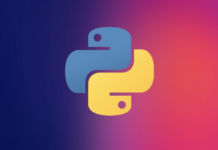 What is bitcoin you ask? Well, Bitcoin is a collection of concepts and technologies that form the basis of a digital money ecosystem. Units of currency, called bitcoin, are used to store and transmit value among participants in the bitcoin network. Bitcoin users communicate with each other using the bitcoin protocol, primarily via the internet, although other transport networks can be used. The bitcoin protocol stack, available as open source software, can be run on a wide range of computing devices, including laptops and smartphones.
What is bitcoin you ask? Well, Bitcoin is a collection of concepts and technologies that form the basis of a digital money ecosystem. Units of currency, called bitcoin, are used to store and transmit value among participants in the bitcoin network. Bitcoin users communicate with each other using the bitcoin protocol, primarily via the internet, although other transport networks can be used. The bitcoin protocol stack, available as open source software, can be run on a wide range of computing devices, including laptops and smartphones.
Users can transfer bitcoin over the network to do just about anything that can be done with conventional currencies, including buy and sell goods, send money to people or companies, or extend credit. Bitcoin can be purchased, sold, and exchanged for other currencies at specialized currency exchanges.
Bitcoin is entirely virtual. There are no physical or digital coins. The coins are implied in transactions that transfer value from sender to recipient. Users of bitcoin own keys that allow them to prove ownership of bitcoin in the bitcoin network. With these keys they can sign transactions to unlock the value and spend it by transferring it to a new owner. Keys are often stored in a digital wallet on each user’s computer or smartphone. Possession of the key that can sign a transaction is the only prerequisite to spending bitcoin, putting the control entirely in the hands of each user.
Bitcoin is a distributed, peer-to-peer system. There is no central server or point of control. Bitcoin are created through a process called “mining.” Mining involves competing to find solutions to a mathematical problem while processing bitcoin transactions. Any participant in the bitcoin network may operate as a miner, using their computer’s processing power to verify and record transactions. Every 10 minutes a bitcoin miner is able to validate the transactions of the past 10 minutes and is rewarded with brand new bitcoin. Bitcoin mining decentralizes the currency-issuance and clearing functions of a central bank and replaces the need for any central bank.
The bitcoin protocol includes built-in algorithms that regulate the mining function across the network. The difficulty of the processing task that miners must perform is adjusted dynamically so that, on average, someone succeeds every 10 minutes regardless of how many miners are competing at any moment. The protocol also halves the rate at which new bitcoin are created every 4 years, and limits the total number of bitcoin that will be created to a fixed total just below 21 million coins. The result is that the number of bitcoin in circulation closely follows an easily predictable curve that approaches 21 million by the year 2140. Due to bitcoin’s diminishing rate of issuance, over the long term, the bitcoin currency is deflationary. Furthermore, bitcoin cannot be inflated by “printing” new money above and beyond the expected issuance rate.
Behind the scenes, bitcoin is also the name of the protocol, a peer-to-peer network, and a distributed computing innovation. The bitcoin currency is really only the first application of this invention. Bitcoin represents the culmination of decades of research in cryptography and distributed systems and includes four key innovations brought together in a unique and powerful combination. Bitcoin consists of:
- A decentralized peer-to-peer network (the bitcoin protocol)
- A public transaction ledger (the blockchain)
- A set of rules for independent transaction validation and currency issuance (consensus rules)
- A mechanism for reaching global decentralized consensus on the valid blockchain (Proof-of-Work algorithm)











